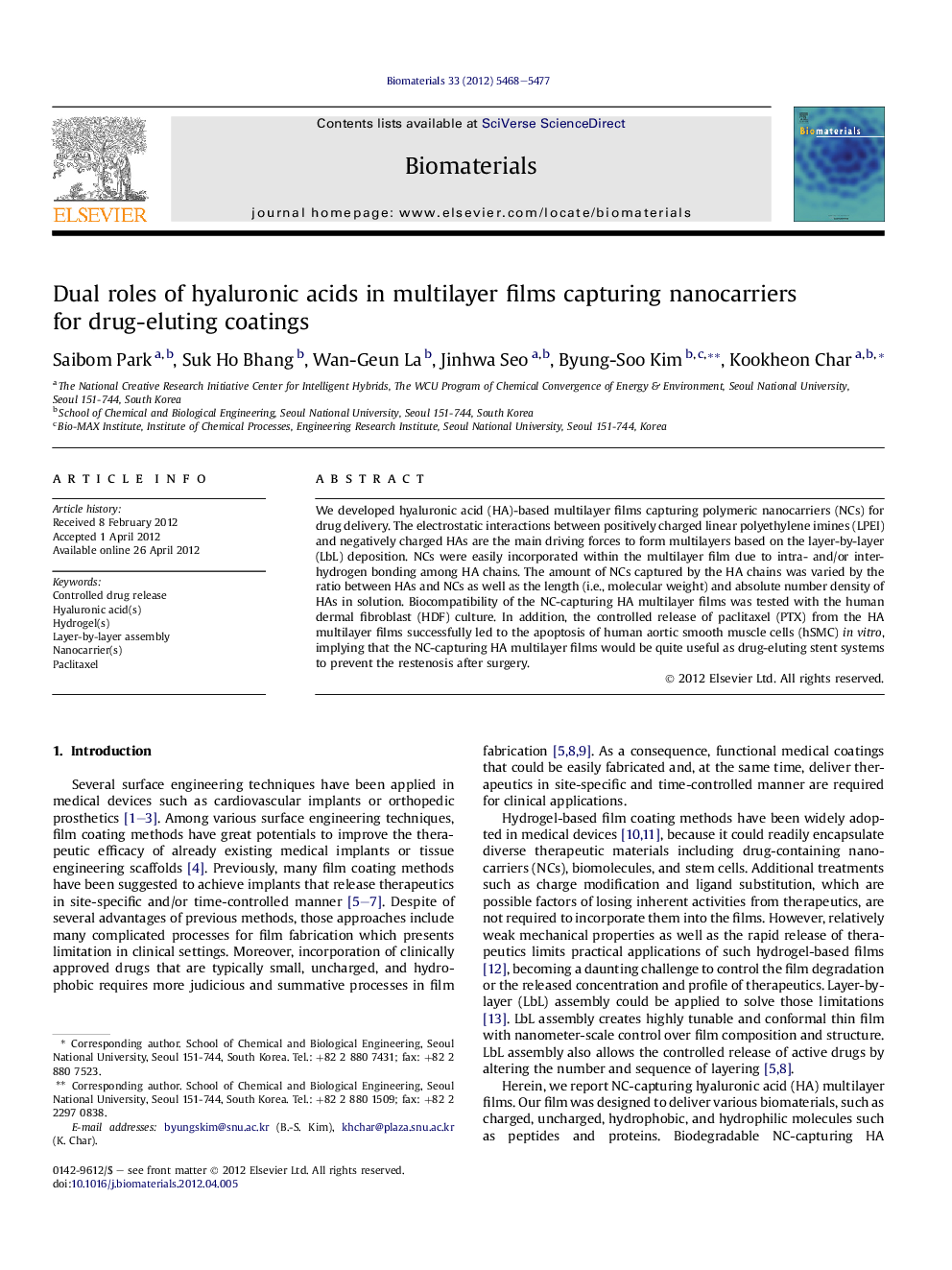| Article ID | Journal | Published Year | Pages | File Type |
|---|---|---|---|---|
| 10229545 | Biomaterials | 2012 | 10 Pages |
Abstract
We developed hyaluronic acid (HA)-based multilayer films capturing polymeric nanocarriers (NCs) for drug delivery. The electrostatic interactions between positively charged linear polyethylene imines (LPEI) and negatively charged HAs are the main driving forces to form multilayers based on the layer-by-layer (LbL) deposition. NCs were easily incorporated within the multilayer film due to intra- and/or inter-hydrogen bonding among HA chains. The amount of NCs captured by the HA chains was varied by the ratio between HAs and NCs as well as the length (i.e., molecular weight) and absolute number density of HAs in solution. Biocompatibility of the NC-capturing HA multilayer films was tested with the human dermal fibroblast (HDF) culture. In addition, the controlled release of paclitaxel (PTX) from the HA multilayer films successfully led to the apoptosis of human aortic smooth muscle cells (hSMC) in vitro, implying that the NC-capturing HA multilayer films would be quite useful as drug-eluting stent systems to prevent the restenosis after surgery.
Related Topics
Physical Sciences and Engineering
Chemical Engineering
Bioengineering
Authors
Saibom Park, Suk Ho Bhang, Wan-Geun La, Jinhwa Seo, Byung-Soo Kim, Kookheon Char,
